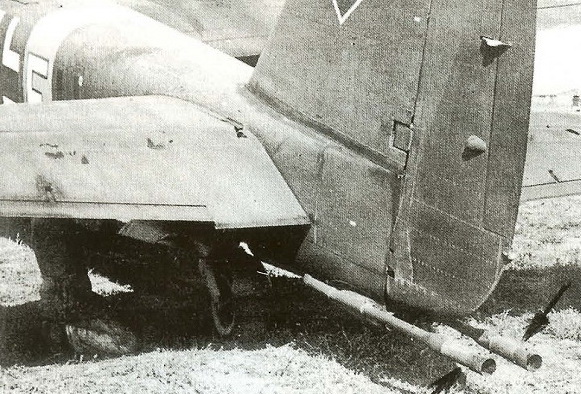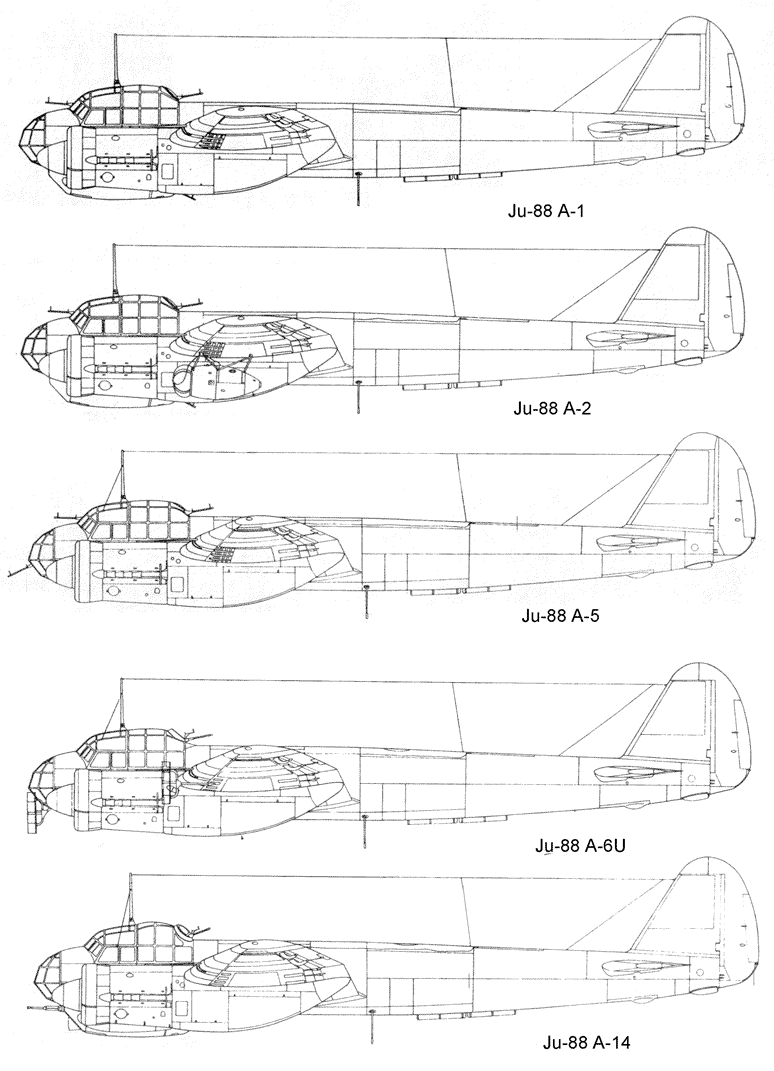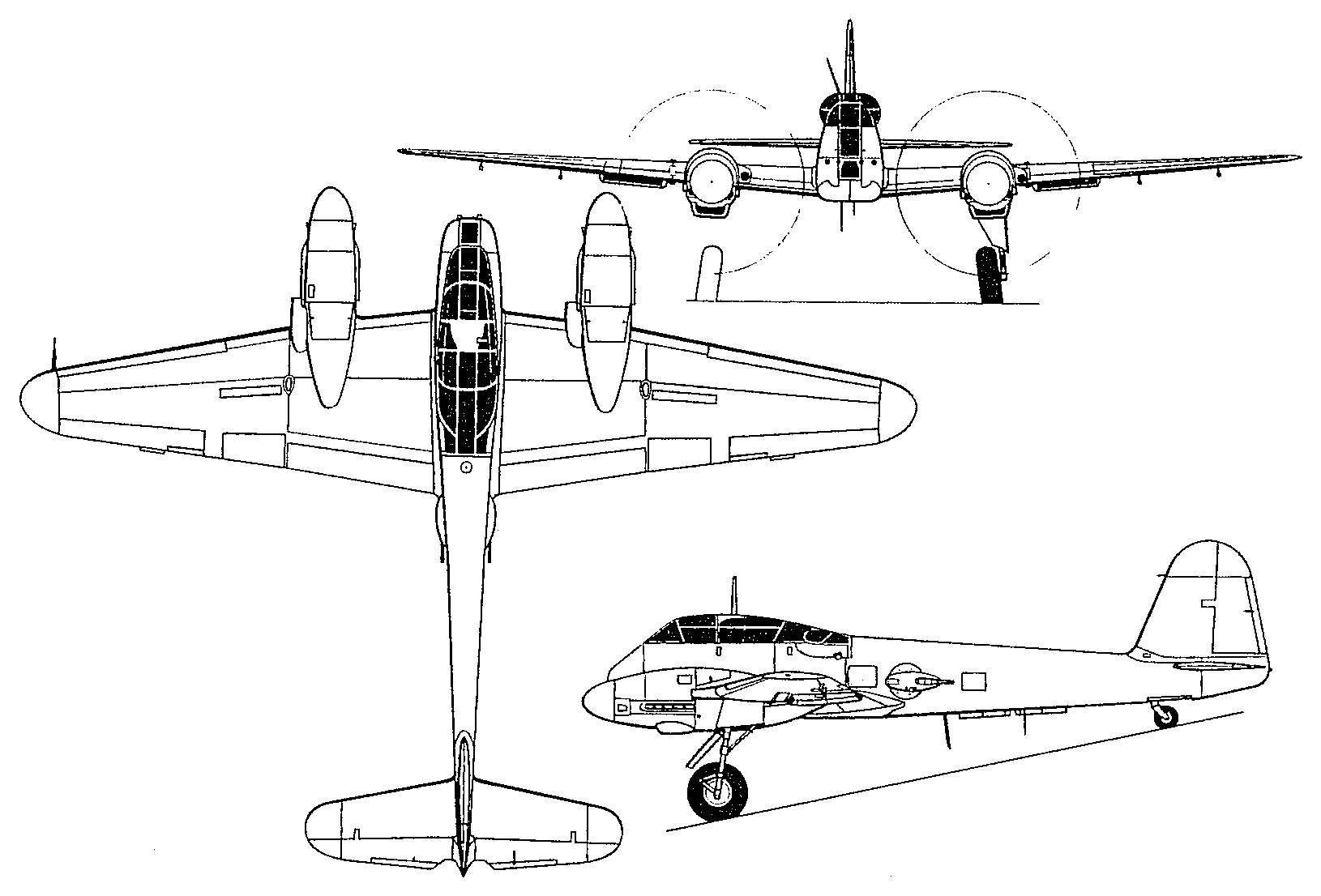
Please let me know… I can’t even figure out what aircraft this is… besides it’s WW2 German one…



Please let me know… I can’t even figure out what aircraft this is… besides it’s WW2 German one…

Probably for laying smoke - I’ve not seen that on any WW2 aircraft, but the early Tiger Moths used for skywriting had exhaust pipes running the entire length of the fuselage and exhausting under the tail. You mix in certain chemicals (I’m not sure exactly what) to the hot exhaust gases and get a thick white smoke…
Wow, for laying smoke, that’s interesting. do you think zee germans did that? I wonder…
They will at least have tried it - lots of experiments like that were tried, whether it ever got used in anger is another matter…
Another possibility is laying poison gas.
I like that. (the response, not laying gas.) However, I know the jap’s unit 731 used underwing pods for laying gas and virus from Zeros.
I have seen pictures of smoke screens laid by aircraft in New Guinea in conjunction with MacArhur’s airborne assault at Nadzab, so I know the US at least used aircraft laid smoke screens “in anger”. The screens at Nadzab were laid by A-20 bombers each equipped with four M-10 smoke tanks mounted under their wings.
See; http://en.wikipedia.org/wiki/Landing_at_Nadzab
I have also read that the US Navy had the ability to mount smoke generators under the wings of some battleship and cruiser spotter planes for laying aerial smoke screens at sea. Whether or not these were ever used in actual battles I do not know.
Could they be fake 20mm cannon?
I remember the Dolittle raiders using broom sticks in the tails of the B-25s to mimic guns to throw off the Japanese fighters (that never came!)
Deaf
[QUOTE=Wizard;173838]I have seen pictures of smoke screens laid by aircraft in New Guinea in conjunction with MacArhur’s airborne assault at Nadzab, so I know the US at least used aircraft laid smoke screens “in anger”. The screens at Nadzab were laid by A-20 bombers each equipped with four M-10 smoke tanks mounted under their wings.
I have also read that the US Navy had the ability to mount smoke generators under the wings of some battleship and cruiser spotter planes for laying aerial smoke screens at sea.
US Government Archive number for this historic video is:
428 NPC 17324 DNS from 1925.
I seem to remember Dieppe raid involved bostons - will check if they were smoke layers
Apologies I will get to grips with typing on here eventually.
Hampdons from No 5 group laid smoke screen for vaagso commando raid in december 1941 and 88 squadron Boston definitely laid smokescreen over the beaches on D day. Can confirm Dieppe also used Boston smoke screen ( looking through reference books for squadron involved )
Back to the original question about german operational use.Article in life magazine january 24th 1944 talks about smoke screen being used by german aircraft but FW190 fighters involved. Is the tail in photo junkers 88 anyone ?
from “Tactical and Technical Trends” no 40 A U.S. intelligence report on German Luftwaffe’s use of smoke during WWII, december 1943.
USE OF SMOKE BY GERMAN AIR FORCE
Various German documents which have become available for examination reveal much information concerning the tactics, and apparatus employed by the German Air Force in the use of smoke. It will be noted that German and American smoke tactics are similar in many respects.
The following information obtained from German documents, was compiled in the Office of the Chief of Chemical Warfare,
a. Weapons and Objectives
Aerial smoke apparatus can be used to establish smoke screens (a curtain of smoke extending down to the ground) and area screens (a smoke cloud extending close to the ground and covering a given area). At present, smoke does not appear to be a suitable weapon for aerial combat.
Ordinary screens are established by a single aircraft or by several aircraft following each other. Area screens, on the other hand, are produced by a number of aircraft flying in close proximity. Two means of dissemination from aircraft are available.
(1) Spray Apparatus – Under air pressure, smoke acid, which is either sulfurtrioxide or chlorsulfonic acid or a mixture of the two, is sprayed from tanks attached to the plane. By experiments it has been found that planes spraying smoke should fly at altitudes of 130 to 165 feet or less. Another German source states that the minimum altitude for smoke cloud emission is 100 feet.
(2) Smoke Bombs – Smoke bombs are used for establishing screens from high altitudes. Usually the filling is either smoke acid or a Berger mixture consisting of powdered aluminum and hexachlorethane. Release by aircraft is the same as for HE bombs.
If it’s a problem with quoting, click ‘Reply with quote’ on the bar at the bottom of the relevant post. This will reproduce the post in a new window where you can reply. At the end of the reproduced post you will see the end quote [/QUOTE]. Start typing after that.
If you want to reply to a specific part of the quote just delete the bits you don’t want.
If you want to reply to several parts, copy the poster’s details from the start of the reproduced post, such as [QUOTE=Zouave;173841] at the start of each section you want to isolate. To end that section, type the end quote, which I’ll separate by a space between the forward slash and quote to avoid this appearing as a quote [/ quote] or [/ QUOTE]
If you just start typing within the reproduced post, which I think you may have done at post #9, it goes pear shaped.
Please post for more information if I haven’t addressed your issue.
In the meantime, welcome to the board and thanks for your contributions.
Hi, My best guess is the aircraft is either an Me210 or 410. The 210 was ordered in quantity before the prototype even flew. It suffered with severe lateral stability issues which required a major re-design, which resulted in the Me410. I do not recognise the pipes as an offensive weapon, but they may well be smoke generating apparatus to highlight turbulence from the airframe. hope this helps.
Best Regards,
I think it’s a Ju-88.
OP’s photo:
Ju-88:

Me-210:

Me-410:

Thanks guys… so, most people thinks those pipes on the Ju-88 are for laying smokes…
My thought is that the OP picture shows a Ju.188 or Ju.88 G.
The “Defence” band around the fuselage forward of the empennage suggests a night fighter, which if fact would in turn suggest the “pipes” as being antennae for a variant of the “Naxos” radar warning system. This system gave German nightfighter crews warning of when their aircraft was being scanned by British Mosquito nightfighters.
And Naxos antennae are, imho, a far more logical and likely explanation.
There were several variants of Naxos, not all of which were adequately documented at the time, or even post-war, mainly because all electronic countermeasures and counter-countermeasures equipment went on to be heavily classified, as indeed much of it remains so til this day.
For what it’s worth, the above is my opinion of what the picture shows, and I readily admit wiser heads than mine may well know more and thus correct any errors I may have here made.
Respectful Regards, Uyraell.